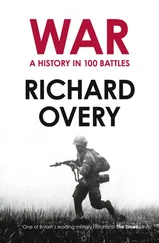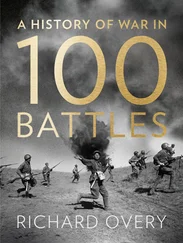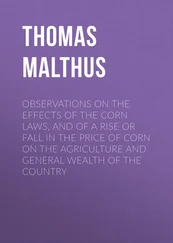I have to thank my good friend Geoff Johnson, a keen and perceptive reader of history, for reading the manuscript; many ‘reader friendly’ amendments have been made as a result of his observant gaze, including the addition of a diary of events.
The mathematics of bombardment are formidable, and I could only appreciate the work of Dr. Brownowski of the wartime Ministry of Home Security ‘through a glass, darkly’. I am in debt, therefore, to John White, who not only spent much time in familiarising himself with the subject, but undertook the heavier task of explaining the implications of it to me, as well as checking the validity of my conclusions from some of the formulas relating to the Battle of the Atlantic; and to David Robinson, of the Royal School of Artillery at Larkhill.
It was my good fortune to begin, on my 55 thbirthday, a degree in War Studies and History at King’s College London. I was able to attend lectures by Andrew Lambert on naval affairs, Brian Holden Reed on the American Civil War, Michael Dockrill on Modern Warfare and Richard Overy on Germany 1914 to 1945. If the discerning reader should observe that I fall below the standard of these gifted academic authors, he or she will more correctly attribute this to my deficiency in absorbing, than to theirs in imparting, knowledge.
I must acknowledge a vast debt to Richard Overy in the writing of this book. Professor Overy has not only read the manuscript through, offering invaluable guidance and comments, and written the foreword, but had previously offered advice for researching the V2, which formed the dissertation for my degree.
The patience and kindness of Julie Ash and of all of the staff of the Public Record Office at Kew have added to the pleasure of research. To read the files is to be transported back to a brave and anxious age of war, whose uncertain issue was hanging on great events that were always, at the time of writing, in the future. To be able to descend on this age from your world of the future, and to attempt to analyze it, is to me, as exciting as if I had really travelled in a time machine; and the walk to Kew Gardens station afterwards, beneath the low thunder of computerised jet aircraft, is to be transported back to the present; to muse, perhaps as they did, on the uncertain future, when the fears and actions of our own age will be analyzed, with the value of hindsight, from the twenty second century and beyond.
I must also acknowledge the patience, kindness and expertise of the staff of the reading room and the photographic archive at the Imperial War Museum, from whom nearly all the photographs in this book have been obtained. The Museum has the most complete copy of the United States Strategic Bombing Survey outside the United States, and was the only place where I was able to locate a copy of Hoelsken’s excellent ‘V Missiles of the Third Reich’. This work, together with Michael Neufeld’s ‘The Rocket and the Reich’, Benjamin King and Timothy Kutta’s ‘Impact’, Richard Overy’s ‘The Air War’ and ‘Why The Allies Won’, John Toland’s ‘Hitler’, Ralph Manheim’s translation of ‘Mein Kampf’ and Herbert Molloy Mason’s ‘The Rise of the Luftwaffe’ (which contains a brief but gripping narrative of the events of 1918/19) all of which are detailed in the bibliography, were the most influential of the published sources.
At Harper Collins, I first put the idea of the book to Ian Drury, who took the crucial decision to proceed with publication (who could be more deserving of the thanks of a new author!) and gave useful advice thereafter; on Ian’s departure to Cassell I have to thank Ian Tandy and, most especially, the tireless and charming Samantha Ward, for their help and advice.
My sister Denna relieved me of my main worry by offering to retype the whole manuscript if the computer crashed. I have also to thank Victoria Mantell, Sophie Seymour and the late Ian Templeton for their encouragement. Victoria’s knowledge of philosophy (and sense of humour!) was of great assistance in discussing some of my ideas.
Lastly, thanks are due to my daughter Becky for her assistance and her knowledge of the publishing world; and to Erica, for being my wife.
PART I
Development and Dreams
‘… A lurid light, a trampling throng,
Sense of intolerable wrong,
And whom I scorned, those only strong!
Thirst of revenge, the powerless will
Still baffled, and yet burning still! …’
From Samuel Taylor Coleridge, The Pains of Sleep
CHAPTER 1
The Seeds of Vengeance
Between August 1914 and November 1918, ranged in two vast and opposing groups, the greatest nations and empires of Europe, Asia and America, aided by all that science could devise or hatred could inspire, had sought to destroy and demoralise each other in the bloodiest war that mankind had yet seen. The central theme of the battle had been the virtual siege of Germany. The frontline soldiers were sustained amid their hardship and terror by close comradeship and a patriotic and disciplined pride. Ringed by hostile armies in France, Italy and Russia, together with her much weaker allies Austria-Hungary, Turkey and Bulgaria, the great German army – disciplined, brave, patriotic, skilful, well led – had defied the world.
By the spring of 1918 that magnificent army had defeated Russia and crippled Italy, but its leaders had also added the United States to her long list of enemies. Her people, blockaded by the British fleet, were on the verge of starvation. Her industry was failing. War weariness had revealed itself in strikes and unrest at home. Risking all on a gambler’s throw of the dice, the German leaders sought, by a giant hammer blow in the west, to secure victory before the vast military potential of America could be brought to bear. The attacks were led by special-forces, the stormtroopers: 1
‘small bodies of shock troops, specially trained in the offensive and distinguished from the mass of the infantry by youth, physical fitness, skill in close combat, brutality and ruthlessness. These shock troops considered themselves a thing apart and looked with contempt upon the common soldiers, especially those of the rearward services; their loyalty was to their commander rather than to the Kaiser; the tides of their units and their badges were novel departures from the existing system. These characteristics were indeed those of the later Freikorps [who will be encountered and viewed shortly], to which they contributed many recruits.’
The offensives were preceded by a short, but hurricane artillery bombardment; taking advantage of early mists, the stormtroopers punched huge holes in the allied lines. But although they gained tactical successes, and although they inflicted heavy casualties, the German assaults expended too much in both blood and morale. The German army lost 348,000 men. The quantity of goods and food looted from the allied lines contrasted starkly with the poverty of their own supplies, and laid bare the mendacity of their own propaganda.
General (later Marshal) Foch, the newly created allied generalissimo, now presided over a series of well timed, limited attacks, each broken off when they lost momentum. On August 8th, 1918, Australian and Canadian troops, aided by 456 tanks, stormed the German lines south of the Somme. The German Chief of Staff and effective commander, General Ludendorff, wrote ‘August 8 thwas the black day in the history of the German army in this war … It put the decline of our fighting troops beyond all doubt … the war must be ended.’ 2On September 15 thFranco-British-Serbian forces attacked the Bulgarians on the Salonika front, and after a series of defeats, Bulgaria crumbled, being granted an armistice on 29 thSeptember. Clearly, German forces were needed from the reserves. But on September 26 tha further series of attacks began in the west, orchestrated by the allied generalissimo. Ludendorff, convinced that victory was no longer possible, arranged a meeting with Germany’s political leaders.
Читать дальше

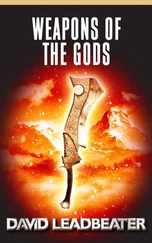
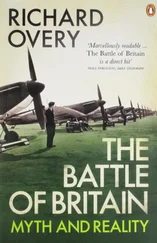

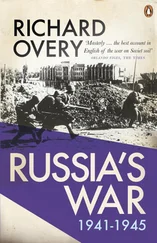

![Traudl Junge - Hitler's Last Secretary - A Firsthand Account of Life with Hitler [aka Until the Final Hour]](/books/416681/traudl-junge-hitler-s-last-secretary-a-firsthand-thumb.webp)


